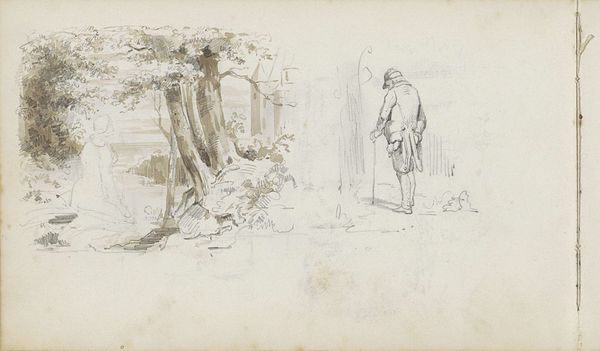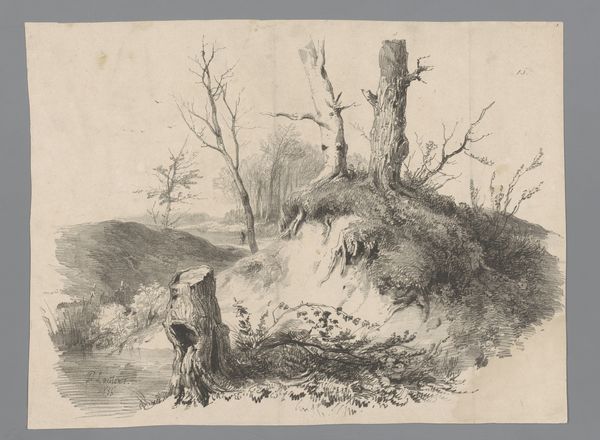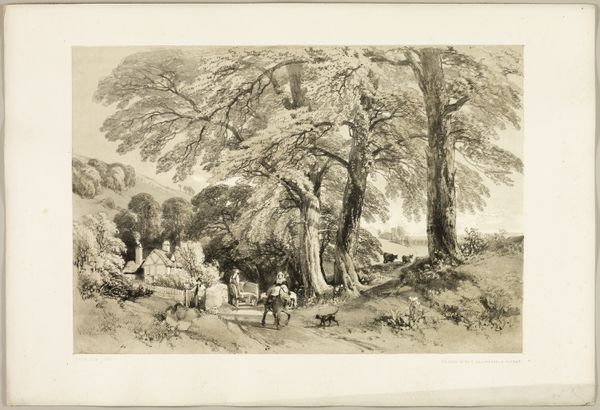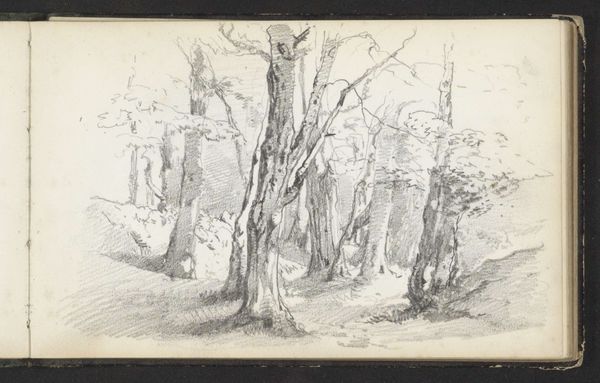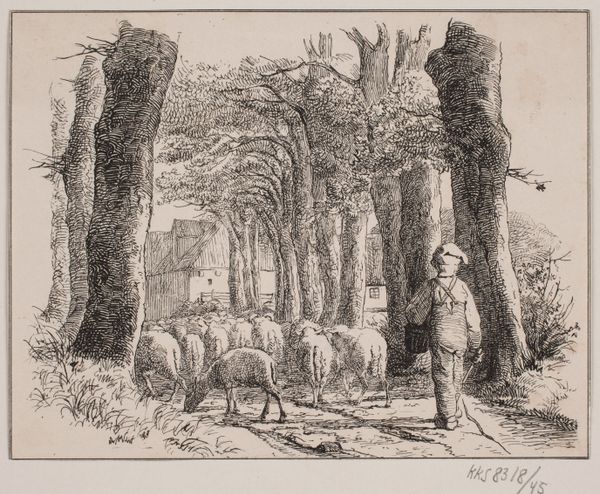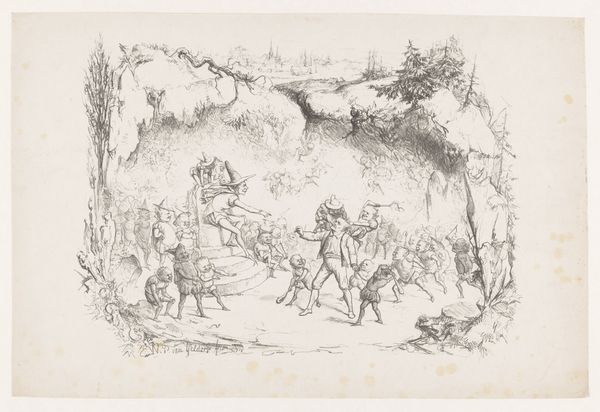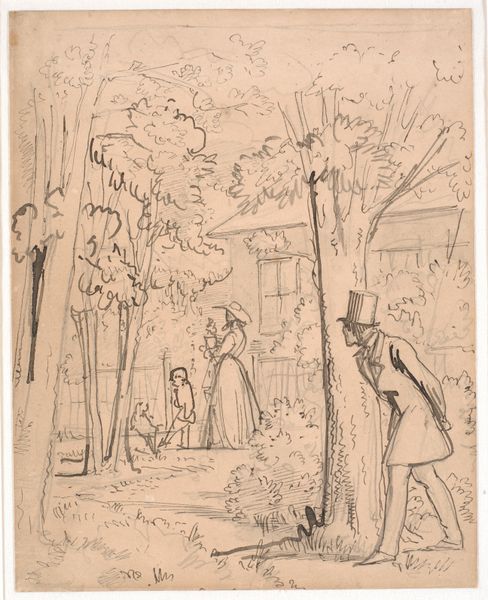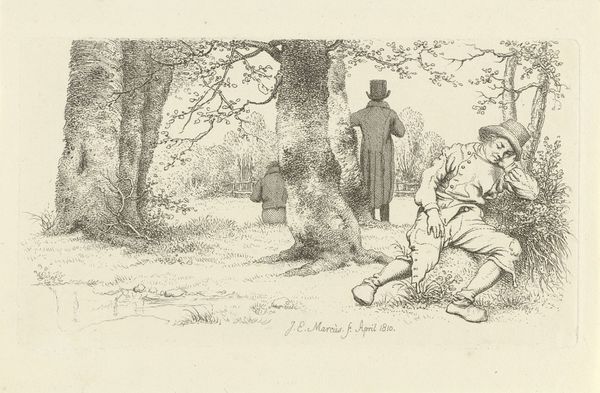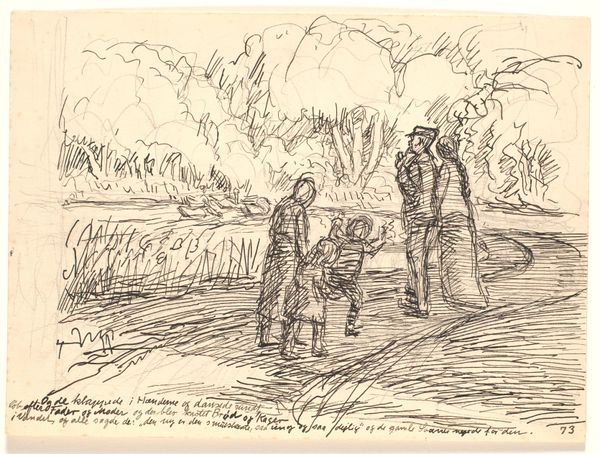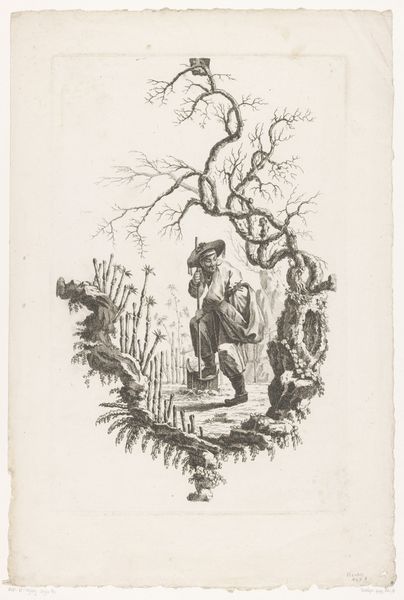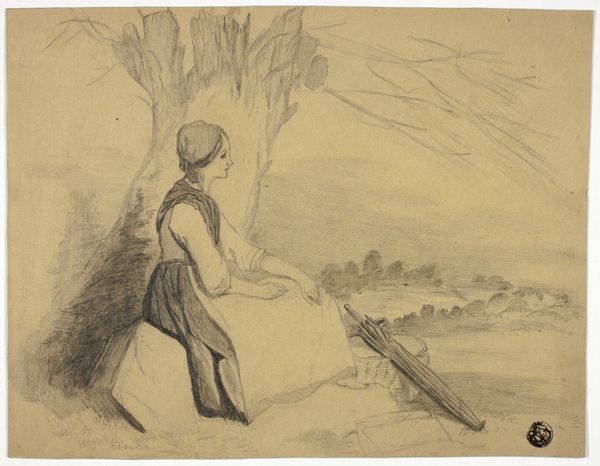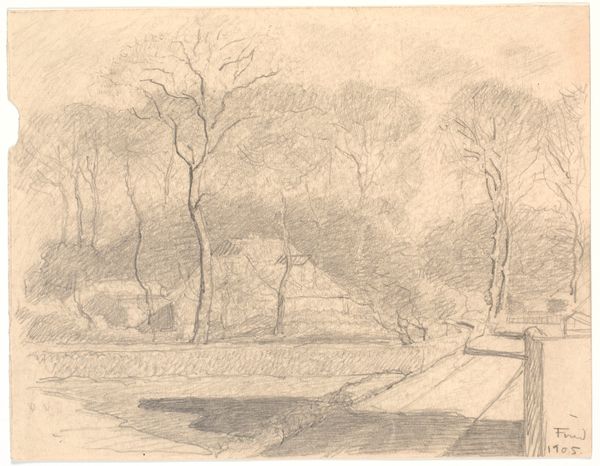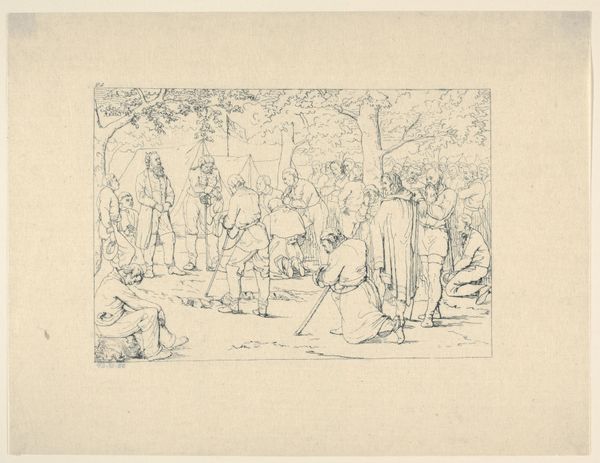
drawing, ink
#
drawing
#
ink drawing
#
landscape
#
figuration
#
ink
#
romanticism
#
realism
Dimensions: 96 mm (height) x 122 mm (width) (bladmaal)
Editor: Here we have Johan Thomas Lundbye’s “Vogterdrengen,” created in 1843, using ink on paper. It feels… nostalgic, a really quiet countryside scene. What strikes you most about it? Curator: I'm drawn to the materiality of it, of course. The ink, the paper – these are the direct results of production. Think about the ink itself, sourced from specific materials, processed through labor, and then applied to the page with intent. The availability and quality of these materials directly impacted the final artwork. Editor: So, less about the boy and the sheep, and more about the...stuff it’s made from? Curator: Not entirely. Look at the way the ink is applied; quickly, efficiently. This isn’t the polished sheen of oil paint trying to hide its creation. The labor is evident; each stroke is a mark of Lundbye’s hand and time. Consider the social context – the rise of industrialization happening alongside these idyllic rural scenes. Is there a tension here? Is this drawing a reaction to the changing landscape of labour itself? Editor: Interesting. It's easy to see it as a simple pastoral scene, but thinking about the physical work and the social climate at the time makes me see it in a whole new light. Curator: Precisely! And by understanding the artist’s process and the context of production, we can peel back those layers of romanticism and grapple with some really substantial ideas. Editor: That gives me a lot to consider – thank you! I’ll definitely be looking at art through a different lens now, thinking about materials first! Curator: A productive exercise. Always consider the materials, means, and relations of production.
Comments
No comments
Be the first to comment and join the conversation on the ultimate creative platform.

